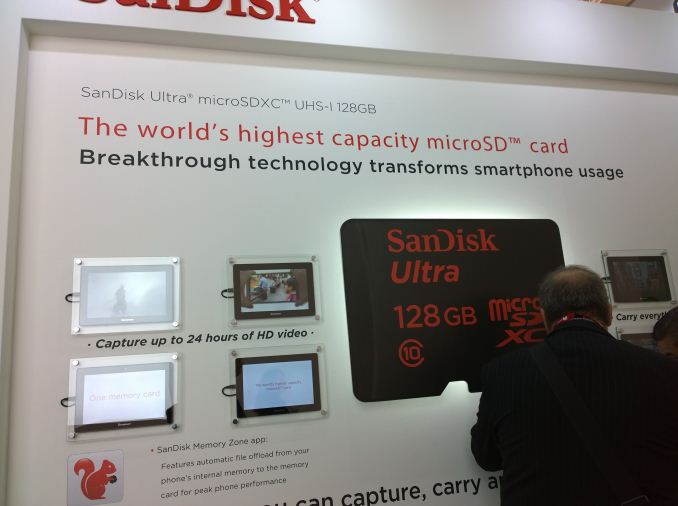SanDisk launches 128GB microSD at MWC
by Joshua Ho on February 26, 2014 2:48 AM EST- Posted in
- Trade Shows
- SanDisk
- MWC 2014

Today, SanDisk is the first to launch the long-awaited (by some) 128GB microSD card, and it seems to be a class 10, UHS-1 card. While there are no benchmarks that I have seen, it's likely that this won't be as fast as the Extreme and Extreme Ultra/Pro microSD brands, which would mean that this is likely only for bulk media storage that only requires sequential reads. Amazon is already selling them for 120USD, for those that don't want to wait.










13 Comments
View All Comments
errorr - Thursday, February 27, 2014 - link
Long run I don't really think SD cards will be important in developed markets. The only thing that keeps the SD cards relevant is in developed markets where it has become the primary medium for video content distribution.Most non iPad tablets will need SD cards just to be viable. Tablets are slowly replacing TV in the developing world.
Davidjan - Thursday, February 27, 2014 - link
Cool!! Meenova microSD reader supports card storage up to 2TB. http://goo.gl/2iJ6gfdstarr3 - Tuesday, March 11, 2014 - link
Here's a useful link:https://www.sdcard.org/developers/overview/capacit...
According to the SD Association themselves, the SDXC standard will be able to offer capacities up to 2TB. Which is to say, if your device is SDXC-compatible (which is likely these days, as major manufacturers are very quick on the uptake in regards to these changes), it'll will be good for any SDXC-labeled card, which theoretically will continue growing in capacity up to the 2TB point.
As mentioned in a previous comment, though, manufacturers don't quote this theoretical 2TB limit as the maximum supported capacity, because at the time of marketing the product, no such card exists, so they merely advertise it as being compatible with the largest card available to the public as of the product's release. But, as the SDXC standard grows in capacity, so, too, will its compatible devices.